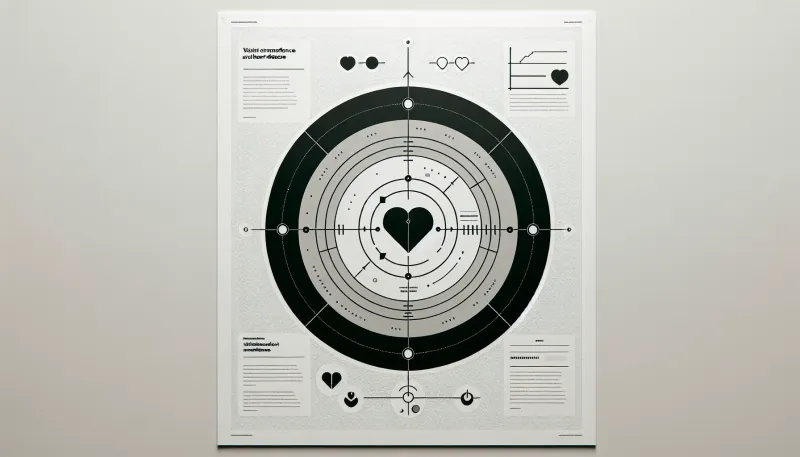Understanding Waist Circumference and Heart Disease: A Comprehensive Guide

Discover the link between waist circumference and heart disease. This comprehensive guide provides insightful information on how your waist size affects heart health.
Heart disease remains one of the leading causes of morbidity and mortality worldwide. While many factors contribute to the risk of developing heart disease, one often overlooked predictor is waist circumference. This comprehensive guide will delve into the intricate relationship between waist circumference and heart disease, exploring its implications, measuring methods, and preventive strategies.
The Link Between Waist Circumference and Heart Disease
Waist circumference is a simple yet powerful indicator of visceral fat—the fat stored within the abdominal cavity. Unlike subcutaneous fat, which lies under the skin, visceral fat surrounds vital organs, posing a significant risk to cardiovascular health. Research has consistently demonstrated that an increased waist circumference is associated with a higher risk of heart disease, independent of Body Mass Index (BMI).
Why Does Waist Circumference Matter?
Visceral Fat and Its Impact on Heart Health
High levels of visceral fat can lead to various metabolic disturbances, including insulin resistance, inflammation, and dyslipidemia (abnormal cholesterol levels). These conditions contribute to the development of atherosclerosis—plaque buildup in the arterial walls—which significantly increases the risk of heart attacks and strokes.
Comparing Waist Circumference and BMI
While Body Mass Index (BMI) has traditionally been used to assess overall fatness, it does not differentiate between muscle and fat, nor does it indicate fat distribution. Waist circumference, on the other hand, directly reflects abdominal fat, making it a more accurate predictor of heart disease risk.
How to Measure Waist Circumference Correctly
For an accurate assessment of heart disease risk, it is crucial to measure waist circumference correctly. Follow these steps:
- Find the Top of Your Hip Bone: Use your fingers to locate the top of your hip bone and the bottom of your ribs.
- Use a Tape Measure: Wrap a tape measure around your waist, midway between the top of your hip bone and the bottom of your ribs. Ensure the tape is snug but not compressing the skin.
- Check Your Measurement: Breathe out naturally and take the measurement. Record the circumference in centimeters or inches.
What Waist Circumference Predicts Heart Disease Risk?
Health organizations have established threshold values to determine increased risk for heart disease based on waist circumference:
- Men: A waist circumference greater than 40 inches (102 cm) indicates a higher risk.
- Women: A waist circumference greater than 35 inches (88 cm) indicates a higher risk.
Strategies to Reduce Waist Circumference and Lower Heart Disease Risk
1. Adopt a Heart-Healthy Diet
Consuming a diet rich in fruits, vegetables, whole grains, and lean proteins can help reduce visceral fat. Incorporate foods high in fiber and healthy fats, such as Omega-3 fatty acids. Avoid processed and sugary foods, as they contribute to fat accumulation and increased waist circumference.
2. Engage in Regular Physical Activity
Exercise is essential for reducing visceral fat and maintaining cardiovascular health. Aim for at least 150 minutes of moderate-intensity aerobic activity, such as walking or cycling, each week. Strength training exercises also help in reducing overall body fat, including abdominal fat.
3. Manage Stress Levels
Chronic stress can increase the production of cortisol, a hormone linked to abdominal fat accumulation. Engage in stress-reducing activities like yoga, meditation, or deep breathing exercises to help manage stress effectively.
4. Prioritize Quality Sleep
Poor sleep can disrupt metabolic processes, leading to weight gain and increased waist circumference. Aim for 7-9 hours of quality sleep per night to support overall health and well-being.
5. Avoid Smoking and Limit Alcohol Consumption
Smoking and excessive alcohol intake are associated with increased abdominal fat and a higher risk of heart disease. Quitting smoking and reducing alcohol consumption can significantly improve heart health and reduce waist circumference.
Conclusion
Waist circumference is a vital measure in understanding the risk of heart disease. By recognizing the importance of visceral fat and its impact on cardiovascular health, individuals can take proactive steps to manage their waist size and, consequently, reduce their heart disease risk. Implementing a heart-healthy diet, engaging in regular physical activity, managing stress, prioritizing sleep, and avoiding harmful substances are practical strategies to achieve and maintain a healthy waist circumference.
Remember, monitoring waist circumference is a simple yet effective way to safeguard heart health. Regular check-ups with healthcare professionals and staying informed about the latest research will further empower individuals in their journey towards better cardiovascular well-being.



























